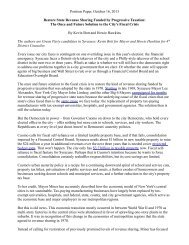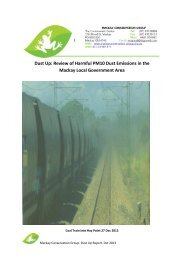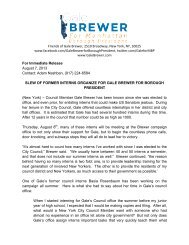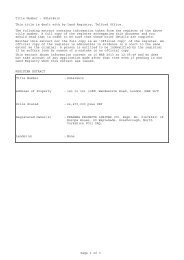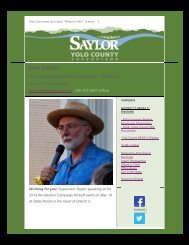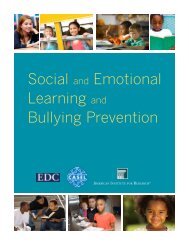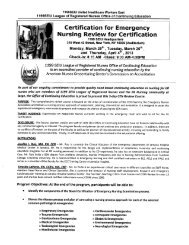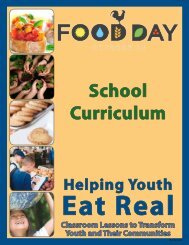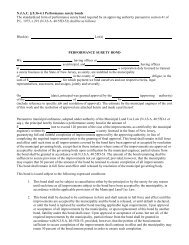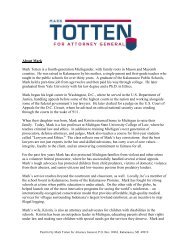You also want an ePaper? Increase the reach of your titles
YUMPU automatically turns print PDFs into web optimized ePapers that Google loves.
Overview of the <strong>Food</strong> <strong>Day</strong> Lessons<br />
Lesson 1: Eat Real<br />
Eating real food is eating whole foods that come straight from plants or animals.<br />
These foods are filled with the nutrients that our bodies need to do our best at<br />
everything we want to do and help us stay healthy long into the future. <strong>Food</strong>s that<br />
are processed, especially those that are overly processed, are stripped of nutrients.<br />
Additionally the processing, packaging, transporting, and marketing of food uses<br />
excessive energy and is harmful to the natural environment. At the end of this lesson,<br />
students create an action plan to be on their way to eating real.<br />
Lesson 2: Mostly Plants<br />
When we eat plants, we get not only essential vitamins, minerals, protein, and<br />
dietary fiber, but also thousands of phytonutrients that may help our bodies be their<br />
healthiest now and protect us from diseases later. We eat all different parts of plants:<br />
roots, stems, leaves, flowers, fruits, and seeds. Animal foods are important too, as<br />
sources of protein, vitamins and minerals, but they are also often high in saturated<br />
fat and cholesterol so we should eat small portions. Students learn to use MyPlate so<br />
they can make sure at least three-quarters of their meals are plants.<br />
Lesson 3: Not Too Much<br />
In addition to the goals of “Eat Real” and “Mostly Plants,” today’s food environment<br />
demands that we also make a conscious effort not to eat too much, especially of<br />
overly processed foods with little or no nutrients and high amounts of added fat,<br />
sugar, and salt. Indeed, many of the typical portions of sweetened beverages and<br />
snack foods contain a day’s worth of fat and/or sugar. When we are aware of this, we<br />
can make a conscious effort to have whole foods instead of overly processed foods<br />
and to small-size-it when we do have overly processed foods.<br />
Lesson 4: Navigate the Environment<br />
The food environment is everything including corner stores, advertisements on<br />
television, gardens in our neighborhoods, fast food places that dot the countryside, to<br />
fruit stands. The food environment strongly influences what we eat, despite our best<br />
efforts to make healthful choices. When we become aware of choices that meet the<br />
<strong>Food</strong> <strong>Day</strong> Eating Goals of “Eat Real,” “Mostly Plants,” and “Not Too Much”, we can<br />
seek these options out and navigate our way to better health as a first step to having<br />
today’s children live long, healthful, and productive lives.<br />
Lesson 5: Be an Advocate<br />
The best way to get us all following the <strong>Food</strong> <strong>Day</strong> Eating Goals is to create an<br />
environment where real, plant-based foods are the norm and easy to find. We can do<br />
this by having more farmers’ markets, fruit stands, gardens, farms, and restaurants<br />
that serve whole, locally sourced foods, and families cooking and eating together.<br />
Additionally, we want to create an environment where overly processed foods come<br />
in small sizes and are not so prevalent. In this lesson, classes create a project to<br />
become advocates who change the food environment in their community.<br />
<strong>Food</strong> <strong>Day</strong> Lessons | 5



